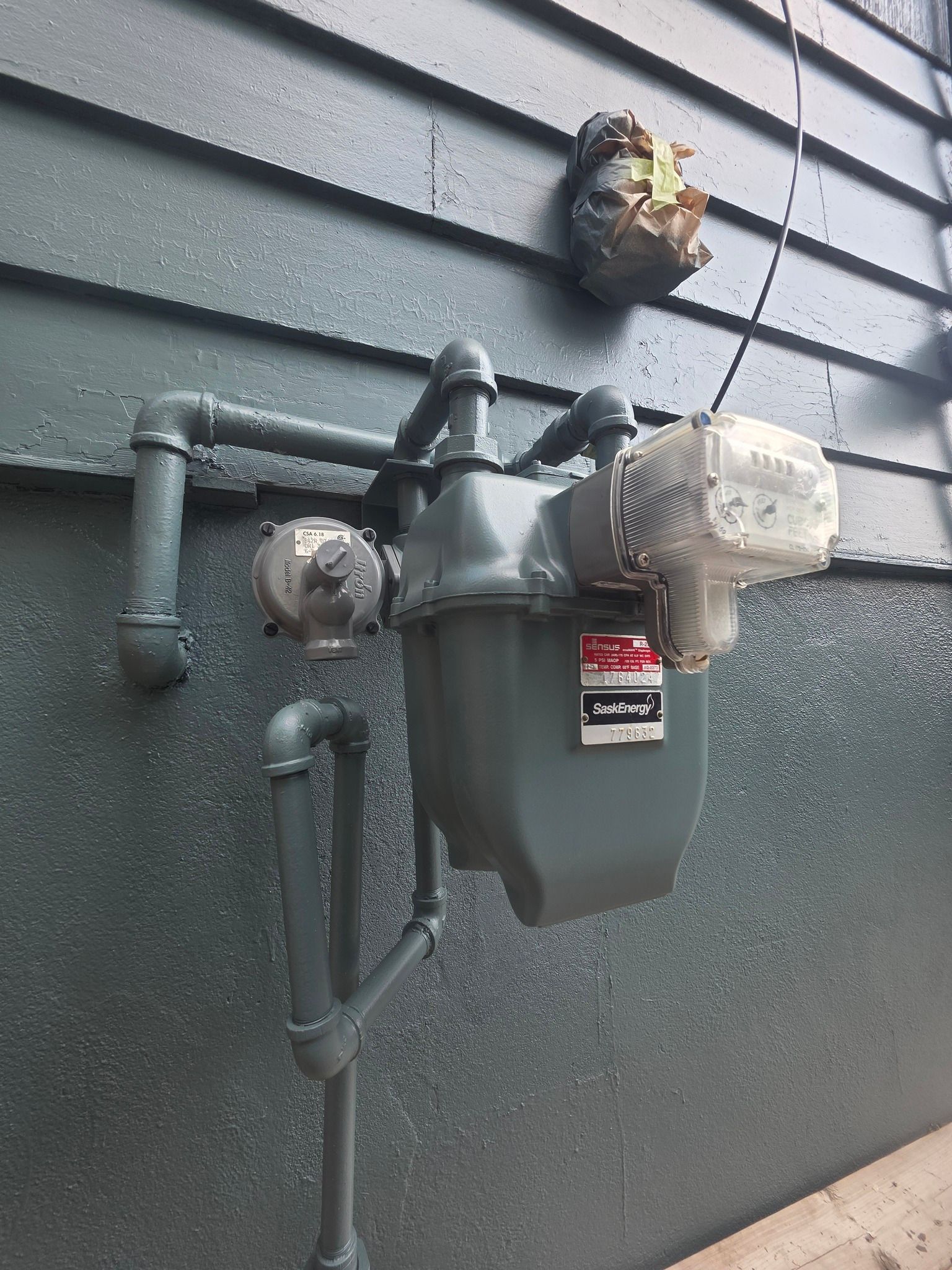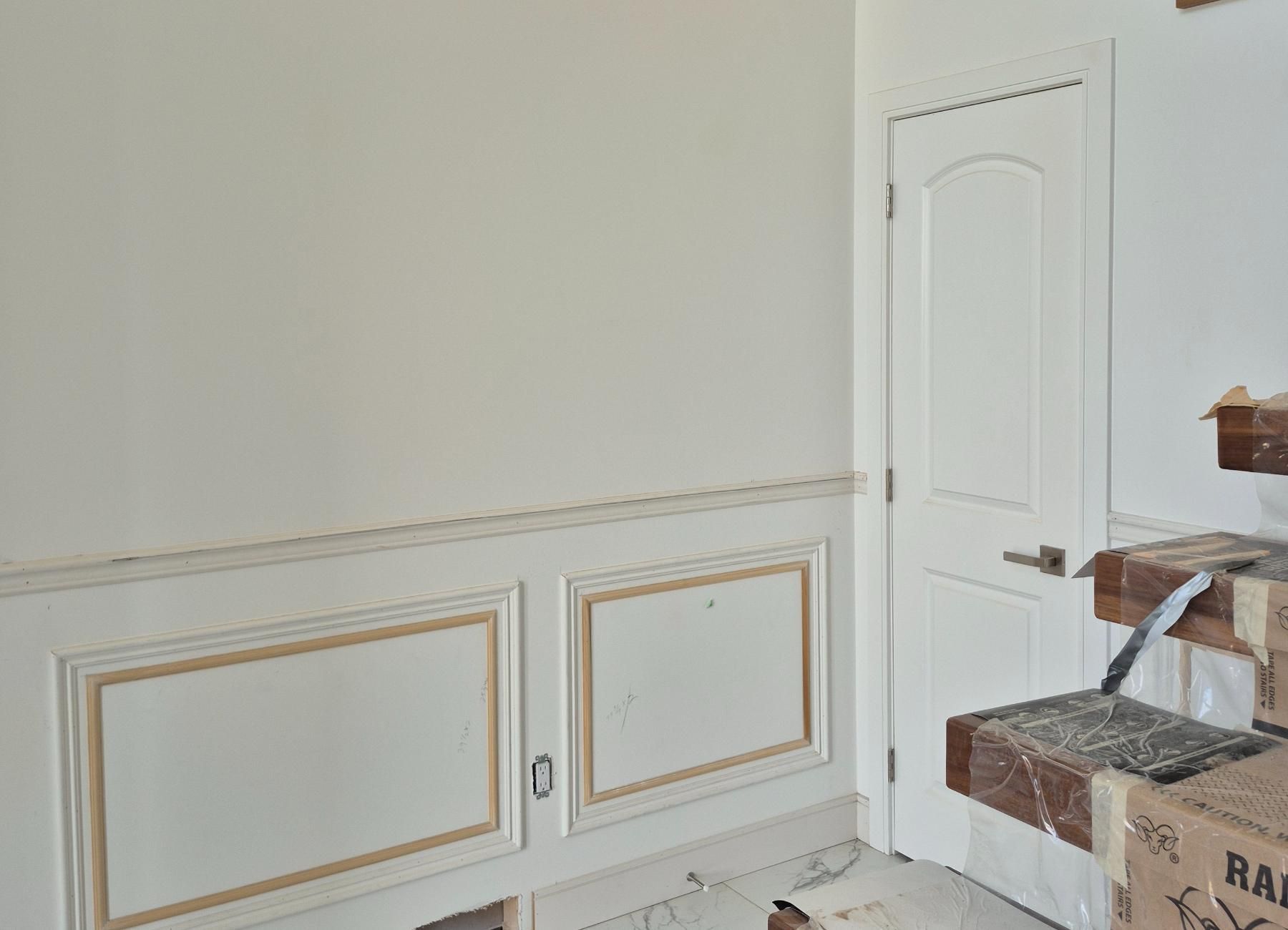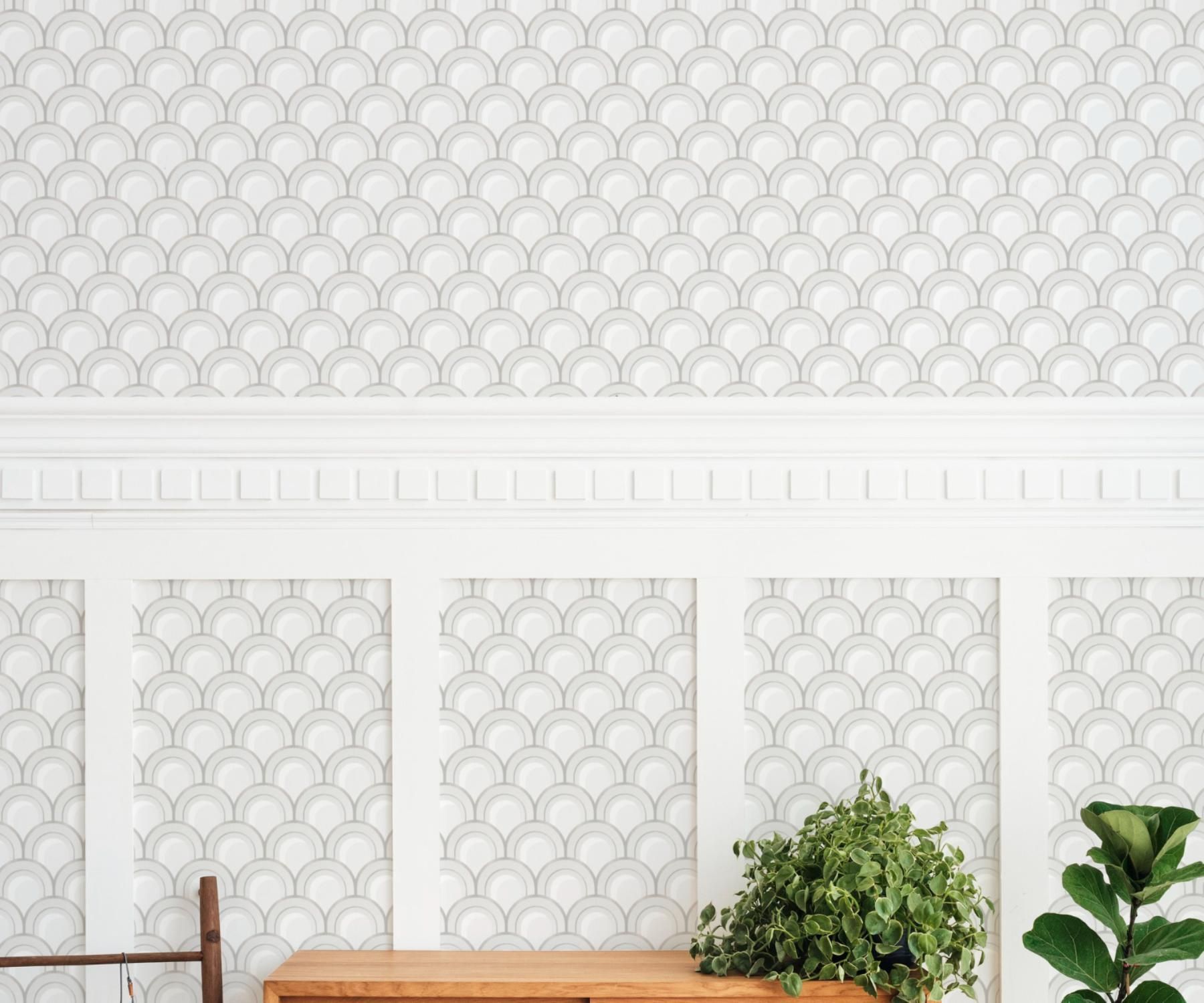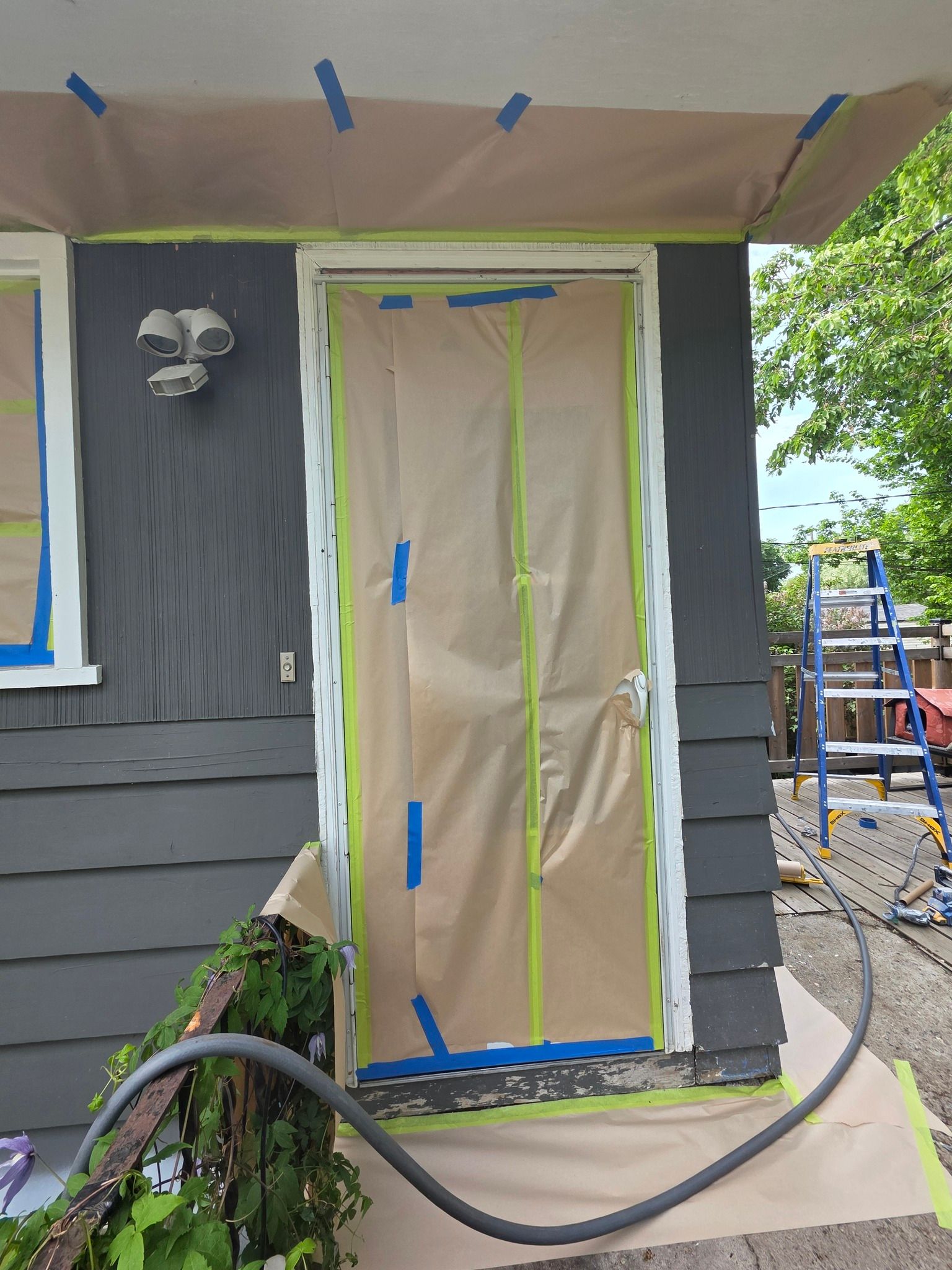The Right Waterproof Paint For Your Home
Waterproof paint protects your home against extreme weather conditions, especially in regions like Saskatoon where we face everything from heavy rainfall to intense snowfall. Standard paint doesn't protect adequately and lasts only 3-5 years before it starts peeling and fading. High-quality waterproof exterior paint stays effective for 10+ years, even under the harshest weather conditions.
Our experience as exterior painting contractors shows how the right waterproof paint on wood outdoors and exterior walls makes the most important difference to your home's longevity. The best waterproof paint for exterior walls, particularly those with silicone-based formulations, doesn't just resist water—it actively repels it. Water beads up and runs off instead of penetrating the surface. Premium options like Emperor Paint are designed to be hydrophobic and can protect your home for up to 25 years. Your water resistant paint must maintain breathability, or it might trap moisture within your walls. In this piece, you'll learn about different types of outdoor waterproof paint, proper application techniques, and ways to pick the best product that matches your specific needs and climate conditions.
Understanding the Role of Waterproof Paint in Harsh Weather
Saskatoon's diverse climate puts your home's exterior through constant wear and tear. Let's get into why protecting your home matters and why waterproof paint is worth the investment.
Why standard paint fails in extreme climates
Moisture is standard paint's worst enemy. Regular paint doesn't have special ingredients to keep water out. This lets moisture seep through and damage what's underneath by a lot. Standard paints only last 3-5 years before they show clear signs of wear. When temperatures go up and down, regular paint can't flex properly. This makes it crack, peel, and fail too soon.
Regular paints also don't curb UV radiation well, which breaks down paint molecules. When UV light hits certain paint parts (called chromophores), it releases energy. This energy breaks bonds in the paint film and creates free radicals. The process makes colors fade, the film become brittle, and the coating break down. In wet or humid places, regular paint doesn't protect enough against mold and mildew that love damp spots.
How waterproof paint protects your home year-round
Waterproof paint creates a special barrier that pushes moisture away instead of soaking it up. This barrier keeps water from getting into walls, which means less cracking, fading, and peeling as time goes by. The paint has water-hating agents that make water form beads and roll off surfaces.
On top of that, good waterproof paint flexes with temperature changes. This helps it stay intact through different seasons. Many brands have UV-fighting pigments to keep colors from fading in the sun. Best of all, waterproof coatings last much longer—usually 8-12 years. Some premium products work for up to a decade. You'll spend less time repainting and your home stays protected better.
The difference between water-resistant and waterproof paint
These terms mean different things, though people often mix them up. Water-resistant paint keeps some water out but doesn't block moisture infiltration completely. It gives simple protection against occasional wetness but water can still get through. This makes it good enough for spots that don't get wet often. Water-resistant paint is usually 50-60 microns thick.
Waterproof paint, however, creates a complete seal against moisture. At over 100 microns thick, it forms a barrier nothing can get through. This makes it perfect for constant moisture exposure. Water-resistant options might be enough for mild conditions. But Saskatoon's harsh climate, with its long snow seasons, freeze-thaw cycles, and heavy rains, needs the maximum protection that only waterproof paint provides.
Types of Waterproof Paint and Their Best Uses
The paint market offers many specialized coatings that shield homes from moisture damage. Your project's success depends on the surface material, how exposed it is to elements, and how long you need the protection to last.
Acrylic latex: flexible and breathable
Acrylic latex paint is a versatile shield for exterior protection. This water-based formula creates a flexible barrier that moves with temperature changes, which stops cracking during Saskatoon's harsh seasons. Today's acrylic latex paints give excellent UV protection and work great on surfaces that get direct sunlight. They also create a breathable layer that lets water vapor escape but keeps liquid water out. High-end products like Sherwin-Williams Emerald Rain Refresh come with self-cleaning technology - dirt just washes away when it rains. A good application of acrylic latex paint protects against moisture, UV rays, and extreme temperatures. These paints are also better for the environment with lower VOC levels than oil-based options.
Elastomeric coatings: ideal for stucco and masonry
Elastomeric paint is a thick, specialized coating that works best on masonry surfaces. It's so flexible that it can bridge tiny cracks in vertical masonry walls. This feature makes it perfect for stucco homes that shift slightly over time. Quality elastomeric coatings can handle wind-driven rain up to 98 mph and create a waterproof barrier when applied right. The 100% acrylic latex formula creates a breathable layer that releases wall moisture, which stops mold from growing due to trapped dampness. You'll need spray equipment and thick coats to get elastomeric paint's full waterproofing benefits. These coatings work well on stucco, masonry, concrete, concrete block and brick.
Oil-based and alkyd paints: durable but less eco-friendly
Alkyd paints are known for their exceptional durability. They take about five days to cure through oxidation, creating a hard, glossy finish that latex paints can't match. This toughness makes them perfect for high-traffic areas that need frequent cleaning. Regular alkyd paints use petroleum-based solvents with high VOC levels, which isn't great for the environment. You'll need paint thinner instead of soap and water for cleanup. All the same, newer options like Benjamin Moore's ADVANCE® blend oil-based paint's smooth finish with easier cleanup. These hybrid products keep the weather-resistant durability while cutting down VOC levels.
Silicone-based masonry paint: superior water repellency
Silicone masonry paint shows off state-of-the-art waterproofing technology. These coatings excel at repelling water while letting the surface breathe. The silicone technology pushes away surface water but lets trapped moisture escape, which prevents blistering you might see with other coatings. These products flex easily and stop water from getting through even when surfaces move. Some silicone formulas are so tough they show no wear after simulated 25-year weather tests. Rain just rolls off these "super hydrophobic" surfaces instead of soaking in. They cost more than basic masonry paints, but their 20+ year lifespan makes them worth it.
Waterproof paint for wood outdoors: what to look for
Outdoor wood needs special waterproof formulas to stay protected. Good outdoor wood paint should keep rain out - some premium brands become rainproof just an hour after you apply them. Look for products with UV stabilizers that block harmful rays that make wood splinter and crack. Oil-based wood sealers take 48-72 hours to cure but give the best protection against water damage. Water-based options are easier to apply and clean up, with fewer fumes. The best outdoor wood paints combine color and protection, so you don't need a separate primer. Quality products guarantee up to 10 years of protection, which means less maintenance work for you.
Preparing and Applying Waterproof Paint for Maximum Protection
Good preparation is the life-blood of any successful waterproofing project. Our experience as Saskatoon painting contractors shows that poor surface prep often guides projects toward premature failure that can get pricey to fix.
Surface cleaning and repair essentials
A thorough visual inspection helps spot cracks, spalling, or surface contaminants. These spots need attention before any waterproof coating application. Concrete surfaces need a moisture check using a tape test to avoid adhesion problems. You must completely remove all dust, grease, oil, and loose particles. Previously painted surfaces require removal of any inconsistent or flaking parts that have weak mechanical properties.
Priming: at the time and why it matters
Quality priming is a crucial step many people skip. A good primer improves the bond between surface and paint to magnify durability and waterproofing properties. Primers also protect against leftover dampness. Porous substrates like plaster work best with acrylic primers, while epoxy primers give superior strength. H2O primers are the only choice for polystyrene surfaces before waterproof membrane installation.
Application tools: brushes, rollers, and sprayers
Surface and material type largely determine your tool selection. Phenolic core short-nap rollers work well for thin films. Brushes do the best job with details around penetrations and transitions in tight spots. Sprayers speed up application on large-scale projects with vertical walls. It's worth mentioning that elastomeric coatings behave differently from regular paint when spraying.
How many coats are enough?
Basement moisture protection typically needs at least two coats. High-risk areas might need extra layers. Manufacturer's warranties usually specify two coats. The surface needs inspection after the second coat to find pinholes that may need touch-ups.
Drying and curing: timing for best results
Paint formulation and environment affect drying times. Acrylic waterproofing paint dries in 2-4 hours and fully cures within 24 hours. Elastomeric paints need 4-8 hours between coats and take 24-48 hours to cure completely. Good ventilation helps speed up drying - you should open windows or run fans, especially in closed spaces. Waterproofing paints dry best between 10°C and 29°C.
Choosing the Right Product for Your Home and Climate
The perfect waterproof paint choice depends on your climate's challenges and your home's building materials. Saskatoon's dramatic temperature changes make this choice a vital part of protecting your home.
Top brands for waterproof exterior paint
Benjamin Moore's Aura Exterior line gives exceptional coverage that holds its color well in our harsh prairie climate. Sherwin-Williams SuperPaint and Duration Exterior Acrylic Latex are prominent choices that stick well and flex with extreme weather. Behr Premium Plus protects against weather and covers well with lower VOC content. Dulux Weathershield makes products that handle Canadian climate shifts and shield against UV rays and temperature swings.
Matching paint to surface: wood, brick, stucco, and more
Elastomeric coatings work best on masonry because they bridge cracks effectively. Oil-based paints create harder, longer-lasting finishes on wooden trim that sees heavy use. Stucco needs paint that's both breathable and waterproof. Never cover an entire stucco wall with elastomeric paint - it stops the wall from breathing properly. Our team at Revive Paint and Wallpaper assesses your home's materials to suggest the right waterproof solutions for each surface.
Eco-friendly and low-VOC options
People want more eco-friendly paint options these days. Low-VOC paints release fewer harmful chemicals, which makes them better for your family's health and the environment. The EPA limits VOC content in "low-VOC" latex paints to 250 grams per liter. Some great eco-friendly choices include ECOS Paint with zero VOCs and no smell, Benjamin Moore's Green Seal certified Eco Spec line, and the budget-friendly Behr Premium Plus with minimal VOCs.
Cost vs. longevity: what really saves money
Quality waterproof exterior paints last 8-12 years before they need a fresh coat. Basic options cost between CAD 34.83–CAD 55.73 per gallon. Premium elastomeric paints run from CAD 69.67–CAD 111.47 per gallon. Premium products cost more upfront but save money over time. Light-colored paints might even cut your summer cooling costs by reflecting more sunlight.
When to call a professional painting contractor
You might just need professional help with high spots, historic surfaces, or damaged areas that need fixing. Multi-unit buildings and commercial properties work better with professional painters because of their complexity. Professional painters also ensure proper application of specialty coatings and maintain color consistency across large areas to maximize durability and looks.
Conclusion
Your home's protection against Saskatoon's extreme weather needs more than regular paint—you just need specialized waterproof formulations that work with our unique climate challenges. Standard paints typically fail after just 3-5 years. High-quality waterproof alternatives can shield your home for a decade or more. The real difference shows up in water resistance, breathability, UV protection, and temperature adaptability. These qualities determine whether your exterior surfaces will stand strong against our harsh prairie conditions or break down too soon.
Quality waterproof paint creates a vital shield between your home and the elements. Acrylic latex works well for general use with its flexibility and breathability. Elastomeric coatings excel on masonry surfaces because they can bridge cracks effectively. Silicone-based formulas give superior water repellency and let trapped moisture escape. Each type has its specific purpose, and matching the right paint to your home's surfaces substantially extends your protection's lifespan. This careful selection process paired with proper prep and application will give your investment maximum value over time.
Professional expertise often marks the difference between okay results and exceptional protection when painting exteriors. Note that we at Revive Paint and Wallpaper, Saskatoon painting company, know our local climate's specific challenges and can suggest the best waterproof solutions for your situation. Premium waterproof paints might get pricey upfront, but they without doubt save money long-term by cutting down maintenance needs and preventing expensive structural damage.
Waterproof paint is your home's primary defense against our extreme weather. Your property represents a major investment, so choosing the right protective coating deserves careful attention. The peace of mind you get from knowing your home stands protected against all weather—driving rain, heavy snow, or intense summer heat—definitely makes quality products and proper application worth it. Your home deserves the best protection against Saskatoon's challenging climate.
FAQs
Q1. How long does waterproof exterior paint typically last? High-quality waterproof exterior paint can last 8-12 years before requiring repainting, with some premium products maintaining effectiveness for up to a decade or more.
Q2. What's the difference between water-resistant and waterproof paint? Water-resistant paint repels water to some extent but remains permeable, while waterproof paint forms a complete seal that prevents any moisture penetration, making it ideal for areas with constant moisture exposure.
Q3. Is waterproof paint suitable for all exterior surfaces? Different surfaces require specific types of waterproof paint. For example, elastomeric coatings are ideal for masonry, while specialized formulations are needed for wood. It's important to match the paint to the surface material for optimal protection.
Q4. Are there eco-friendly options for waterproof exterior paint? Yes, there are low-VOC and eco-friendly waterproof paint options available. These paints emit fewer harmful chemicals, making them healthier choices for both your family and the environment.
Q5. How many coats of waterproof paint are typically needed for effective protection? For optimal protection, a minimum of two coats is typically required. Some high-risk areas might need additional layers, and most manufacturers specify two coats for warranty purposes.




